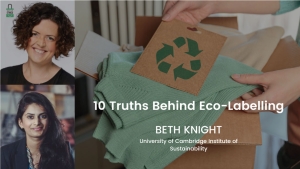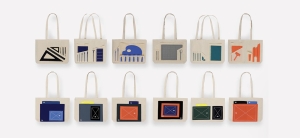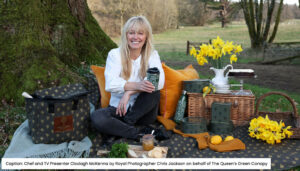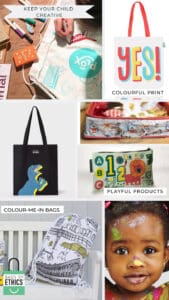No products in the cart.
Return To ShopCottoning On: Organic cotton – can it really make a difference?
Cotton. Our wardrobes are full of it. T-shirts, jeans and underwear, all are made from this natural fibre, but most don’t consider the environmental impact of their shopping habits. Most severely underestimate the amount of water that it takes to make a t-shirt, believing it only takes 314 litres of water to make a singular T-shirt. But shockingly that is just 12% of the actual figure of 2,700 litres. However, if you choose to buy a certified organic cotton T-shirt, you would save a rather staggering 2,457 litres of water, which to put it into perspective, is the same as someone drinking eight glasses of water a day for three and a half years.
To save water in the supply chain, consumers are being urged to buy organic cotton rather than regular cotton. More than half of the items bought in the fashion industry are made from cotton, which equates to an extremely large volume of water. Growing cotton accounts for 69% of the water footprint of textile fibre production; just one kilogram of cotton takes as much as 10,000-20,000 litres of water to produce. The World Economic Forum has identified water shortage as one of the top 10 global risks to society that will occur over the next 10 years, however the majority of cotton is grown in countries that are already struggling with water scarcity.
Yet growing organic cotton uses up to 91% less water than growing conventional cotton. As well as significantly reducing water wastage, organic cotton is the only cotton that eliminates toxic substances from being released into the environment as a result of the use of pesticides and insecticides. The pesticides that are used to grow non-organic cotton are harmful to the environment as they enter the waterways and damage the wildlife that inhabits them. Organic cotton emits 46% less greenhouse gas than non-organic cotton, as it is no grown using fossil-fuel based fertilisers. Conventional cotton alone is responsible for 16% of all insecticides sold worldwide, and so by buying Organic Cotton you are helping to protect eco-systems from being damaged by these toxic pollutants.
Organic cotton is better for the planet, but it is also better for the people. Organic farmers always grow other crops alongside their cotton. These crops can provide farming families and their communities with a more stable, accessible, abundant and diverse food supply and another source of income.
At Bags of EthicsTM we offer organic cotton to all of our clients. Despite organic cotton costing more than non-organic cotton, it is clear that it has a drastic improvement on the environment. Sustainability is the buzzword of 2019, and many companies and individuals are currently striving to be more sustainable. If you are a business, choosing organic cotton for your totes is one way in which you can become more ‘green’. If you are a consumer, when shopping for clothes, look out for brands that use organic cotton. Brands such as Reformation, Everlane, and All birds are pioneers in the sustainable fashion space, using organic cotton, and being completely transparent about how and where their clothes are made.
At Bags of EthicsTM, whilst we encourage all of our clients to opt for organic cotton, we understand that this is not always a viable option in terms of affordability for some smaller companies who are looking to keep costs as low as possible. However, even our non-organic cotton is sourced from farmers who conduct responsible farming practices on the land, and are part of the Agrocel community.
We believe that as consumers we should be much more conscious about the effect that our passion for fashion is having on our environment. We are transparent about our manufacturing practices, and whilst we aim to produce our totes as ethically and sustainably as possible, we know that we are not perfect, and so are constantly striving to better ourselves and our manufacturing processes. We also want to help educate others on ways in which they can make small changes to their everyday lives in order to be more sustainable – buying organic cotton clothing is just one of the many ways we can do this. For more tips and tricks, check out our Instagram – @bagsofethics.
Daisy from Bags of EthicsTM





